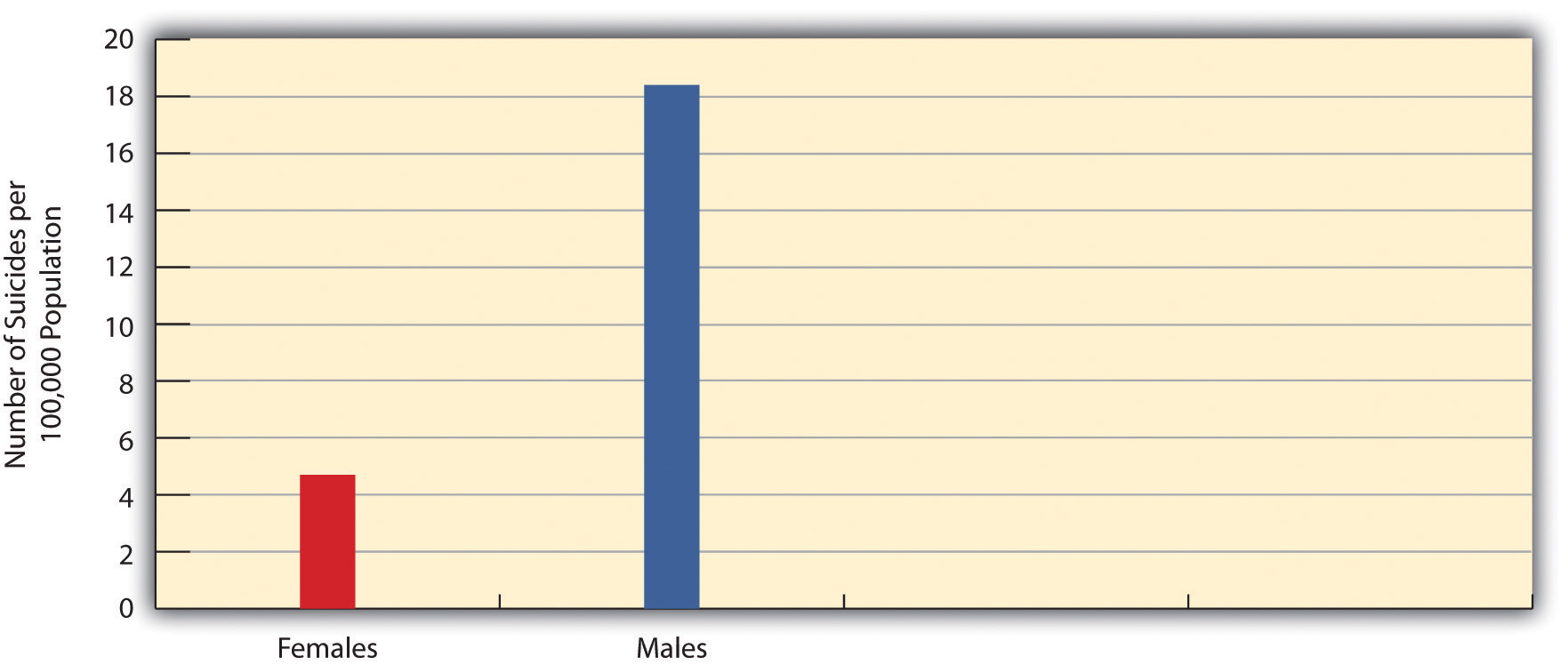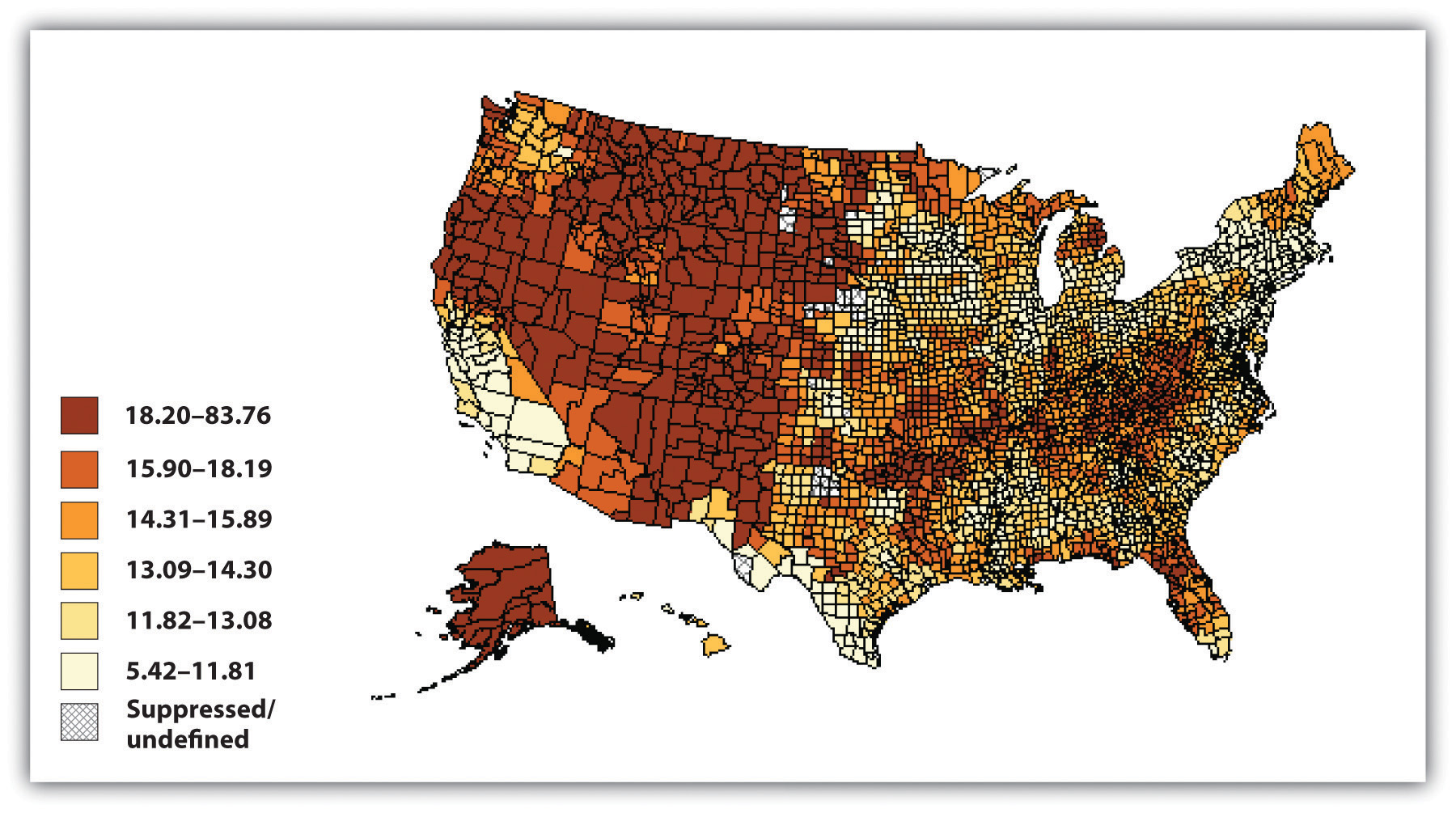This is “The Sociological Perspective”, section 1.1 from the book Sociology: Brief Edition (v. 1.1). For details on it (including licensing), click here.
For more information on the source of this book, or why it is available for free, please see the project's home page. You can browse or download additional books there. To download a .zip file containing this book to use offline, simply click here.
1.1 The Sociological Perspective
Learning Objectives
- Define the sociological perspective.
- Provide examples of how Americans may not be as “free” as they think.
- Explain what is meant by considering individuals as “social beings.”
Most Americans probably agree that we enjoy a great amount of freedom. And yet perhaps we have less freedom than we think. Although we have the right to choose how to believe and act, many of our choices are affected by our society, culture, and social institutions in ways we do not even realize. Perhaps we are not as distinctively individualistic as we might like to think.
The following mental exercise should serve to illustrate this point. Your author has never met the readers of this book, and yet he already knows much about them and can even predict their futures. For example, about 85% of this book’s (heterosexual) readers will one day get married. This prediction will not always come true, but for every 100 readers, it will be correct about 85 times and wrong about 15 times. Because the author knows nothing about the readers other than that they live in the United States (and this might not be true for every reader of this Flat World Knowledge book), the accuracy of this prediction is remarkable.
The author can also predict the kind of person any one heterosexual reader will marry. If the reader is a woman, she will marry a man of her race who is somewhat older and taller and who is from her social class. If the reader is a man, he will marry a woman of his race who is somewhat younger and shorter and who is from his social class. A reader will even marry someone who is similar in appearance. A reader who is good-looking will marry someone who is also good-looking; a reader with more ordinary looks will marry someone who also fits that description; and a reader who is somewhere between good-looking and ordinary-looking will marry someone who also falls in the middle of the spectrum.
Naturally, these predictions will prove wrong for some readers. However, when one takes into account all the attributes listed (race, height, age, social class, appearance), the predictions will be right much more often than they are wrong, because people in the United States do in fact tend to choose mates fitting these general descriptions (Arum, Roksa, & Budig, 2008; Takeuchi, 2006).Arum, R., Josipa R., & Budig, M. J. (2008). The romance of college attendance: Higher education stratification and mate selection. Research in Social Stratification and Mobility, 26, 107–121; Alexander, T. S. (2006). On the matching phenomenon in courtship: A probability matching theory of mate selection. Marriage & Family Review, 40, 25–51. If most people will marry the type of person who has just been predicted for them, this may mean that, practically speaking, one’s choice of spouse is restricted—much more than we might like to admit—by social class, race, age, height, appearance, and other traits. If so, the choice of a mate is not as free as we might like to think it is.
For another example, take the right to vote. The secret ballot is one of the most cherished principles of American democracy. We vote in secret so that our choice of a candidate is made freely and without fear of punishment. That is all true, but it is also possible to predict the candidate for whom any one individual will vote if enough is known about the individual. Again, our choice (in this case, our choice of a candidate) is affected by many aspects of our social backgrounds and, in this sense, is not made as freely as we might think.
To illustrate this point, consider the 2008 presidential election between Democrat Barack Obama and Republican John McCain. Suppose a room is filled with 100 randomly selected voters from that election. Nothing is known about them except that they were between 18 and 24 years of age when they voted. Because exit poll data found that Obama won 66% of the vote from people in this age group (http://abcnews.go.com/PollingUnit/ExitPolls), a prediction that each of these 100 individuals voted for Obama would be correct about 66 times and incorrect only 34 times. Someone betting $1 on each prediction would come out $32 ahead ($66 – $34 = $32), even though the only thing known about the people in the room is their age.
Figure 1.1

Young people were especially likely to vote for Barack Obama in 2008, while white men tended, especially in Wyoming and several other states, to vote for John McCain. These patterns illustrate the influence of our social backgrounds on many aspects of our lives.
Source: Obama photo courtesy of the Obama-Biden Transition Project, http://change.gov/about/photo; McCain photo courtesy of the United States Congress, http://www.gpoaccess.gov/pictorial/111th/states/az.pdf.
Now let’s suppose we have a room filled with 100 randomly selected white men from Wyoming who voted in 2008. We know only three things about them: their race, gender, and state of residence. Because exit poll data found that 67% of white men in Wyoming voted for McCain, a prediction can be made with fairly good accuracy that these 100 men tended to have voted for McCain. Someone betting $1 that each man in the room voted for McCain would be right about 67 times and wrong only 33 times and would come out $34 ahead ($67 – $33 = $34). Even though young people in the United States and white men from Wyoming had every right and freedom under our democracy to vote for whomever they wanted in 2008, they still tended to vote for a particular candidate because of the influence of their age (in the case of the young people) or of their gender, race, and state of residence (white men from Wyoming).
Yes, Americans have freedom, but our freedom to think and act is constrained at least to some degree by society’s standards and expectations and by the many aspects of our social backgrounds. This is true for the kinds of important beliefs and behaviors just discussed, and it is also true for less important examples. For instance, think back to the last class you attended. How many of the women wore evening gowns? How many of the men wore skirts? Students are “allowed” to dress any way they want in most colleges and universities (as long as they do not go to class naked), but notice how few students, if any, dress in the way just mentioned. They do not dress that way because of the strange looks and even negative reactions they would receive.
Think back to the last time you rode in an elevator. Why did you not face the back? Why did you not sit on the floor? Why did you not start singing? Children can do these things and “get away with it,” because they look cute doing so, but adults risk looking odd. Because of that, even though we are “allowed” to act strangely in an elevator, we do not.
The basic point is that society shapes our attitudes and behavior even if it does not determine them altogether. We still have freedom, but that freedom is limited by society’s expectations. Moreover, our views and behavior depend to some degree on our social location in society—our gender, race, social class, religion, and so forth. Thus society as a whole and also our own social backgrounds affect our attitudes and behaviors. Our social backgrounds also affect one other important part of our lives, and that is our life chancesThe degree to which people succeed in life in such areas as education, income, and health.—our chances (whether we have a good chance or little chance) of being healthy, wealthy, and well educated and, more generally, of living a good, happy life.
The influence of our social environmentA general term for social backgrounds and other aspects of society. in all of these respects is the fundamental understanding that sociologyThe scientific study of social behavior and social institutions.—the scientific study of social behavior and social institutions—aims to present. At the heart of sociology is the sociological perspectiveThe belief that people’s social backgrounds influence their attitudes, behaviors, and life chances., the view that our social backgrounds influence our attitudes, behavior, and life chances. In this regard, we are not just individuals but rather social beings deeply enmeshed in society. Although we all differ from one another in many respects, we share with many other people basic aspects of our social backgrounds, perhaps especially gender, race and ethnicity, and social class. These shared qualities make us more similar to each other than we would otherwise be.
Does societyA group of people who live within a defined territory and who share a culture. totally determine our beliefs, behavior, and life chances? No. Individual differences still matter, and disciplines such as psychology are certainly needed for the most complete understanding of human action and beliefs. But if individual differences matter, so do society and the social backgrounds from which we come. Even the most individual attitudes and behaviors, such as the marriage and voting decisions discussed earlier, are influenced to some degree by our social backgrounds and, more generally, by the society to which we belong.
In this regard, consider what is perhaps the most personal decision one could make: the decision to take one’s own life. What could be more personal and individualistic than this fatal decision? When individuals commit suicide, we usually assume that they were very unhappy, even depressed. They may have been troubled by a crumbling romantic relationship, bleak job prospects, incurable illness, or chronic pain. But not all people in these circumstances commit suicide; in fact, few do. Perhaps one’s chances of committing suicide depend at least in part on various aspects of the person’s social background.
Figure 1.2

Although suicide is popularly considered to be a very individualistic act, it is also true that individuals’ likelihood of committing suicide depends at least partly on various aspects of their social backgrounds.
© Thinkstock
To illustrate this point, consider suicide rates—the percentage of a particular group of people who commit suicide, usually taken as, say, eight suicides for every 100,000 people in that group. Different groups have different suicide rates. As just one example, men are more likely than women to commit suicide (Figure 1.3 "Gender and Suicide Rate, 2007"). Why is this? Are men more depressed than women? No, the best evidence indicates that women are more depressed than men (Klein, Corwin, & Ceballos, 2006)Klein, L. C., Corwin, E. J., & Ceballos, R. M. (2006). The social costs of stress: How sex differences in stress responses can lead to social stress vulnerability and depression in women. In C. L. M. Keyes & S. H. Goodman (Eds.), Women and depression: A handbook for the social, behavioral, and biomedical sciences (pp. 199–218). New York, NY: Cambridge University Press. and that women try to commit suicide more often than men (Centers for Disease Control and Prevention, 2008).Centers for Disease Control and Prevention. (2008). Suicide: Facts at a glance. Retrieved from http://www.cdc.gov/ViolencePrevention/pdf/ Suicide-DataSheet-a.pdf If so, there must be something about being a man that makes it more likely that males’ suicide attempts will result in death. One of these “somethings” is that males are more likely than females to try to commit suicide with a firearm, a far more lethal method than, say, taking an overdose of sleeping pills (Miller & Hemenway, 2008).Miller, M., & Hemenway. D. (2008). Guns and suicide in the United States. New England Journal of Medicine, 359, 989–991. If this is true, then it is fair to say that gender influences our chances of committing suicide, even if suicide is perhaps the most personal of all acts.
Figure 1.3 Gender and Suicide Rate, 2007

Source: Data from U.S. Census Bureau, 2010.
In the United States, suicide rates are generally higher west of the Mississippi River than east of it (Figure 1.4 "U.S. Suicide Rates, 2000–2006 (Number of Suicides per 100,000 Population)"). Is that because people out west are more depressed than those back east? No, there is no evidence of this. Perhaps there is something else about the western states that helps lead to higher suicide rates. For example, many of these states are sparsely populated compared to their eastern counterparts, with people in the western states living relatively far from one another. Because we know that social support networks help people deal with personal problems and deter possible suicides (Stack, 2000),Stack, S. (2000). Sociological research into suicide. In D. Lester (Ed.), Suicide prevention: Resources for the millennium (pp. 17–30). New York, NY: Routledge. perhaps these networks are weaker in the western states, helping lead to higher suicide rates. Then too, membership in organized religion is lower out west than back east (Finke & Stark, 2005).Finke, R., & Stark, S. (2005). The churching of America: Winners and losers in our religious economy. New Brunswick, NJ: Rutgers University Press. If religious beliefs and the social support networks we experience from attending religious services both help us deal with personal problems, perhaps suicide rates are higher out west in part because religious belief is weaker. A depressed person out west thus is, all other things being equal, at least a little more likely than a depressed person back east to commit suicide.
Figure 1.4 U.S. Suicide Rates, 2000–2006 (Number of Suicides per 100,000 Population)

Source: Adapted from Centers for Disease Control and Prevention, National Center for Injury Prevention and Control, Division of Violence Prevention. (2009). National suicide statistics at a glance. Retrieved from http://www.cdc.gov/violenceprevention/suicide/statistics/suicide_map.html.
Key Takeaways
- According to the sociological perspective, social backgrounds influence attitudes, behavior, and life chances.
- Social backgrounds influence but do not totally determine attitudes and behavior.
- Americans may be less “free” in their thoughts and behavior than they normally think they are.
For Your Review
- Do you think that society constrains our thoughts and behaviors as the text argues? Why or why not?
- Describe how one aspect of your own social background has affected an important attitude you hold, a behavior in which you have engaged, or your ability to do well in life (life chances).




